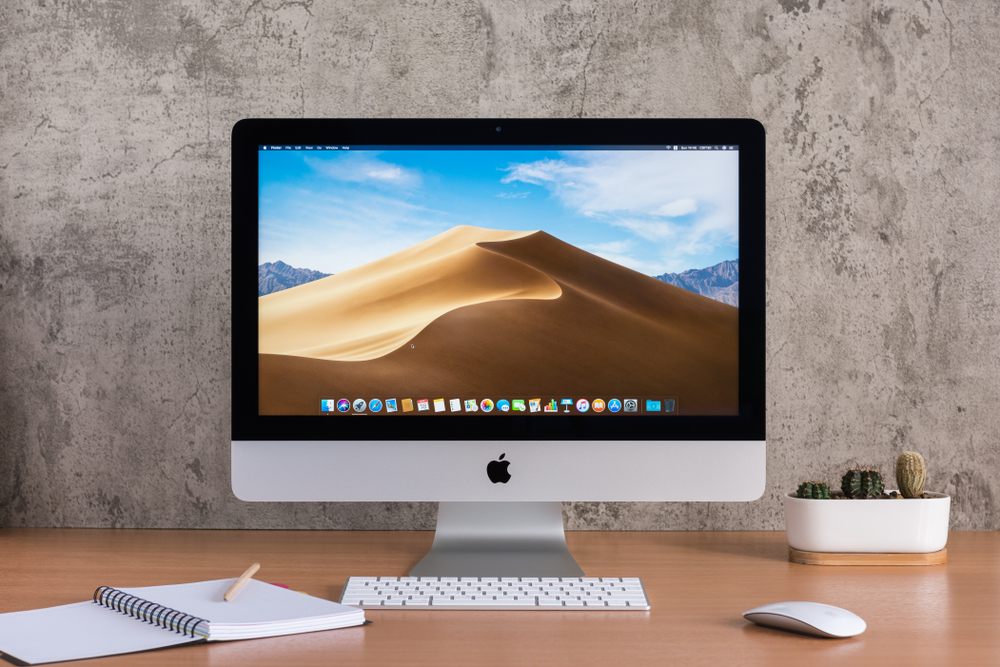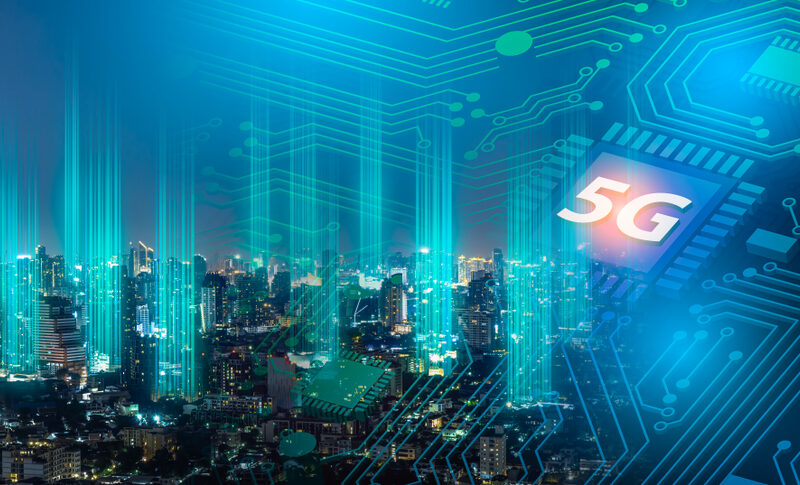Apple has built its first Mac computers whose power stems from its design chips.
In June, this firm declared that it would stop using the Intel processors that it began operating in 2006. According to Apple, utilizing the M1 chip had advantages like enhanced battery life, fast wake from sleep mechanism, and the capability of running iOS apps.
Apple also stated that it had improved all its Mac apps; however, it now wishes to persuade other developers to follow suit. The new computers present the latest models of its:
– MacBook Air 13 in (33 cm) that no longer needs a fan to maintain coolness in its processor.
– MacBook Pro 13, which, according to Apple, can now use one battery charge, for playing a video for 20 hours (double the earlier timespan).
- 13in MacBook Pro, which, according to Apple can currently play video for 20 hours using one battery charge double the timespan it took before.
- Mac Mini desktop computer (screen-less)
- Apple’s website shows that beginning today, it will be the only kind of MacBook air it will sell. However, it will persist in providing the other couple of machines, and you have the choice of Intel chips.
It did not present the latest models of its Mac Pro or iMac computers, which indicates that Apple may be waiting for improved types of chip with more significant memory and more graphics-processing abilities to use in them.
The latest Macs will be sold in the coming week. They will propel the MacOS Big Sir operating system offered to the current Intel-based Macs this Thursday.
Customized chip
Apple stated that the M1 gives an optimal performance of the ‘newest PC laptop chip’ while using minimal power. It can also offer two times the CPU (central processing unit) output.
However, one disadvantage is that the Macs are only currently available with a maximum memory of 16 gigabytes. It represents 50% of RAM presented by the MacBook Pro, whose model is Intel-based and 1/4 of the amount the same Mini extends to. Having more memory mainly benefits apps like games and video editing software.
Sometimes Apple’s chips are described as arm-based because there is a license for the instruction sets. It defines how processors deal with commands from a firm called Arm in the UK. However, the American firm designs the main processor circuits. One benefit is that Apple decides the accelerators to install. These describe particular sections whose specialty is dealing with specific jobs like cryptography or machine learning.
It also combines memory and different operations into one package instead of utilizing other specialist chips that enhance performance.
According to Carolina Milanesi from Consultancy Creative Strategies, ’Shifting to Apple silicon enables Apple to obtain a similar integration level we have experienced on iPadOS and iOS where the user enjoys the advantage of an app ecosystem and operating system which are silicon optimized.’
Another advantage is that you can run iPad and iPhone apps on the processor. But, they might need a user-interact change to operate without a screen. The disadvantage is that present apps written for Intel processors should be conducted under emulation. Apple says it’s Rosetta 2 emulator can translate these instantly without an issue. However, the software only operates fast and smoothly if developers invest time to improve their products to operate natively.
Inspite of the challenges that the developers; community experiences of late, one professional predicted that soon, the majority of the consumer apps would be embraced but also said that for other many specialist programs, the situation might be different.
‘Apple is among the leading five suppliers in the PC market but has a problem in enterprise owing to its meager share of around 5%,’ said Gartner’s Annette Jump.
‘It will have a difficult time persuading software-creators dedicated to that industry to begin improving their products for the latest Macs.’ Apple remarked that next year, Adobe would launch a native model of Photoshop and also, Omni Group would publish universal models of its productivity software. However, running Windows 10 natively nor Microsoft’s office apps were not mentioned.
Surface rival
Microsoft has invested a lot of effort to enable Windows to operate on Arm-based chips from Qualcomm that was also initially created for mobile phones. It presented a device like this, the Surface Pro X, at the beginning of this year, using the low-power processor to create its ’slimmest’ version ever.
Currently, however, most computer sales or Windows still depend on Inge’s technology; but, there are rumors that the latest Macs might have knock-on impacts.
‘The steps Apple takes will help authenticate Arm-based chips in the data center and for personal computing. It means the entire Arm ecosystem will gain,’ stated CCS Insight’s Ben Wood. ‘For Intel, it raises more future concern than losing the Mac business.’
Landmark Macintosh computers
The Mac describes one of the ancient existing computer models. The cheaper PCs have typically outsold it; however, many of its variations have greatly impacted.
Apple Macintosh (1984)
This classic all-inclusive personal computer is not the first one from Apple to have a GUI (graphical user interface) controlled by a mouse – the Lisa attained this feat one year ago. It did so, however, at a minimum cost. The first Macintosh design had minimal memory and couldn’t use a hard disc. Several of those limitations signified that a more effective follow-up needed to be produced fast in the same year.
Macintosh II (1987)
It was the first Macintosh that used a color display. Additionally, it presented the ‘chimes of death’ sound that played if faulty hardware was detected.
Macintosh Portable (1989)
Even though the first Macintosh featured a handle at its rear to facilitate easy movement, it was the first computer in the company whose power originated from a battery. It was charged for around 10 hours; however, it was big and costly, and it did not sell well. Apple went on using in-built trackballs on its laptops until 1994 when it transitioned to trackpads.
Powerbook Duo (1992)
Apple sold various moderately small and compact laptops for five years whose design enabled them to be plugged inside a dock and utilized with a big monitor, external keyboard and floppy disc drive, when at work or home. It is obvious however, the the ‘ultraportable’ idea was premature at that time and it failed.
Power Macintosh 6100 (1994)
Apple’s first major advancement in processor technology is when it changed to the Power PC processors from the Motorola’s 68k-series chips, which it created jointly with IBM and Motorola. The change signified that the present software required emulation to operate, making it run slower until it was rewritten for the Risc (reduced instruction set computer) chip-based structure.
The computer offered a unique concept on the home PC’s appearance and prevented Apple from being bankrupt. It had Steve Job’s influence; he had recently resumed as Chief executive and Jony Ive, the firm’s industrial design chief.
The designation G3 was included in its name after the creation of a quicker PowerPC chip model.
Power Mac G4 Cube (2000)
Another try to redesign computing; however, it was not successful. Considering its cost, inefficient upgradability, and performance, many found it too restricted. What made it worse is that according to some users, the plastic casing had cracks. Afterward, Tim Cook stated, ‘we created it with passion, but it failed miserably in the market.’
Powerbook G4 (2001)
At first, the laptop had a titanium body exterior that changed and lasted for years. The absence of a Powerbook G5 replacement turned into a popular joke as IBM worked hard but failed in creating a model of its chip that would be sufficiently cool when running to be accommodated in the machine.
Mac Mini (2005)
This small desktop PC was first created to be a beginner-level computer for people who did not want to spend a lot, who wanted to reuse the present monitor and other tools. Newer models were also sold for using in computer servers for small firms.
iMac (2006)
It is the first computer in Apple to have Intel processors. Once more, old hardware needed to be operated under emulation. This time, the first model of Rosetta software from Apple was used. It could interpret code written for G4, G3 but not G5 into commands that the Intel chip could manage.
Macbook Air (2008)
Steve Jobs left a mark when he launched the ’slimmest laptop in the globe’ by extracting it from a paper envelope. It was first sold as a premium product but later changed to its company’s entry-range laptops design.
MacBook Pro (2016)
The laptop presented the touch bar that describes an interactive control strip which provides a substitute for the standard fixed function keys. The bar gets power from its Arm-Based processor.
Mac Pro (2019)
Apple is committed to the Mac platform, and the altered design of this sophisticated desktop tower confirms this. It has an optional set of add-on wheels, which cost £ 700 more, and it reminds us that the firm trusts that computers are marketable if they have a superior design apart from power.
image Krisda / Shutterstock.com



